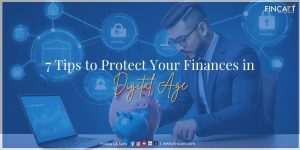Table of Contents
ToggleThe sunk cost fallacy is a well-known cognitive bias that affects decision-making. It describes how people continue to invest in a venture, relationship, or project simply because they have already incurred significant costs, even when future prospects are grim. This fallacy has profound implications in personal finances, relationships, and business, often leading to further losses.
Understanding the Sunk Cost Fallacy
A sunk cost is any cost that has already been incurred and cannot be recovered. The sunk cost fallacy occurs when people make decisions based on these irrecoverable costs, even when they no longer provide value or benefit to future outcomes.
Imagine you’ve bought a non-refundable movie ticket for Rs. 800. Halfway through the movie, you realize it’s terrible, but you continue watching. Why? You justify it by thinking, “I already spent Rs. 800.” However, in reality, that money is a sunk cost. Whether you stay or leave, you can’t get it back. Staying doesn’t change the fact that you’ve already paid.
The Psychology Behind the Fallacy
Psychologically, humans don’t like to admit when they’ve made a mistake. Continuing to invest in a losing project can feel like a way to “recoup” past losses, even when rationally, further investment won’t reverse the losses.
The sunk cost fallacy is largely driven by a combination of loss aversion, cognitive dissonance, and commitment bias. Let’s explain these drivers.
Loss Aversion: Humans are more sensitive to losses than to equivalent gains. According to Daniel Kahneman and Amos Tversky’s Prospect Theory (1979), the pain of losing $100 is significantly more intense than the pleasure of gaining $100. This is why we are inclined to “throw good money after bad” to avoid feeling the pain of a loss.
Cognitive Dissonance: First described by Leon Festinger in 1957, cognitive dissonance occurs when our actions conflict with our beliefs or values. Continuing with a bad decision helps reduce this discomfort temporarily.
Commitment Bias: People tend to stay committed to their initial choices, fearing that reversing them would undermine their self-image.
Examples of the Sunk Cost Fallacy
1. Concorde
A famous case is Concorde—a British-French supersonic passenger airplane. The development cost of Concorde skyrocketed from an estimated £70 million in 1962 to over £1.3 billion by the time it was launched in 1976. Despite being evident early on that the plane was a financial failure, both governments continued to fund the project for years because they had already sunk so much money into it. Economically, they would have been better off abandoning the project earlier.
2. Blockbuster
Blockbuster, once the dominant video rental company, failed to adapt to changing technology and the rise of digital streaming. Instead of pivoting to online rentals early or acquiring emerging players like Netflix, Blockbuster stuck to its brick-and-mortar business model because it had heavily invested in physical stores. This refusal to shift strategies contributed to the company’s eventual bankruptcy in 2010. Blockbuster turned down the opportunity to acquire Netflix in 2000 for $50 million. By the time Blockbuster went bankrupt in 2010, Netflix was valued at over $12 billion.
3. Holding onto a Falling Stock
One of the most common manifestations of the sunk cost fallacy in investing is holding onto underperforming stocks. Investors may think, “I’ve already invested so much in this stock, I’ll just wait for it to recover.” However, in many cases, the stock may never bounce back, and the longer the investor holds, the more significant the loss.
4. Doubling Down on a Losing Trade
Suppose an investor buys shares in a company for Rs. 1,000 per share, and the price drops to Rs. 600. Instead of selling, the investor decides to buy more at Rs. 600, hoping to lower the average cost and “break even.” If the stock continues to drop to Rs. 300, the investor ends up losing even more. Buying 10 additional shares at Rs. 600 increases the total investment to Rs. 16,000 (20 shares), but the value drops to just Rs. 6,000 at Rs. 300 per share—a loss of Rs. 10,000.
Impact of the Sunk Cost Fallacy
| Scenario | Effect of Sunk Cost Fallacy |
| Continued funding of failing projects | Leads to wasted resources and missed opportunities. |
| Poor stock-holding strategies | Investors incur larger losses by holding onto failing investments. |
| Resource misallocation | Wastes time, money, and human capital on non-productive ventures. |
| Not selling an unprofitable business | Continued operational inefficiencies and debt accumulation. |
| Personal pursuits | Continuing a hobby, habit, or pursuit despite it no longer bringing joy or value. |
| Relationship dynamics | Staying in unfulfilling relationships due to past emotional or time investment. |
How to Avoid the Sunk Cost Trap
1. Reframe the Decision:
Focus on future outcomes rather than past investments. Ask yourself: “Would I make this decision if I hadn’t already spent time/money on it?”
2. Set Predefined Exit Points:
In business and investing, setting clear conditions for when you’ll cut your losses helps you avoid emotional decision-making. This could be stopping a project if it exceeds a specific budget or selling an investment if it drops below a certain value.
3. Practice Mindfulness and Reflection:
Being aware of your own cognitive biases is a key step to avoiding them. Periodically reflect on your decisions and ask whether your reasoning is sound or clouded by sunk costs.
4. Seek Objective Advice:
An outside perspective can help you avoid the sunk cost fallacy. Someone who isn’t emotionally or financially invested may provide a clearer view of whether it’s worth continuing with a decision.
Looking for a Financial Advisor?
Connect with Fincart for personalized financial advisory services and achieve your financial goals with confidence.
Conclusion
The sunk cost fallacy is a trap that can lead us to waste time, money, and resources. Whether in personal life, business, or investing, the key to avoiding this bias lies in acknowledging that past investments cannot be recovered and should not influence future decisions. By focusing on the best course of action moving forward, regardless of previous expenditures, we can make more rational, effective decisions.
FAQs
Q: Why is the sunk cost fallacy so hard to overcome?
A: Humans naturally dislike losses and feel discomfort in admitting mistakes. This aversion makes it hard to let go of past investments, even when future prospects are grim.
Q: Can businesses be profitable despite falling into the sunk cost fallacy?
A: While some businesses may survive after years of unprofitable projects, consistently falling into the sunk cost trap can lead to long-term financial instability.
Q: How does the sunk cost fallacy affect investors?
A: Investors may continue to hold onto losing stocks or investments, hoping to recover losses, even when there’s little chance of the stock improving.
Q: How can I recognize when I’m falling into the sunk cost fallacy?
A: Ask yourself if your decision would be the same if you hadn’t invested time, money, or effort previously. If your answer is no, you may be falling into the sunk cost trap.




